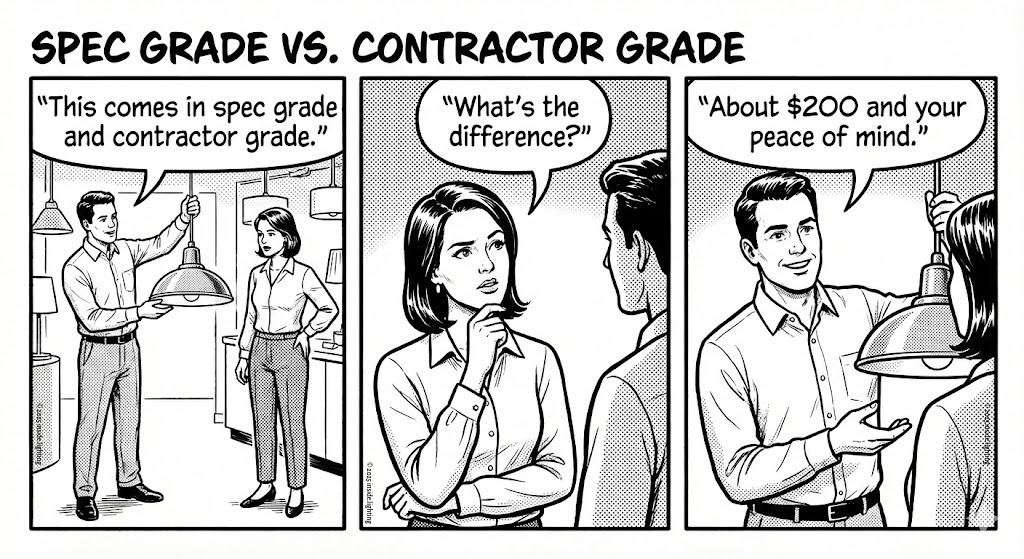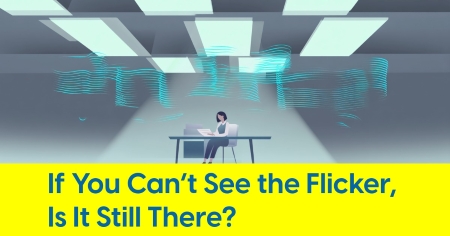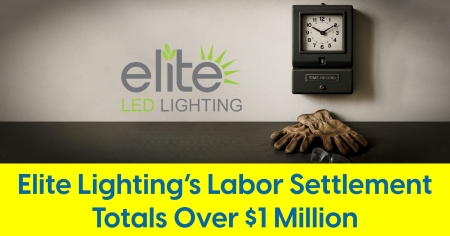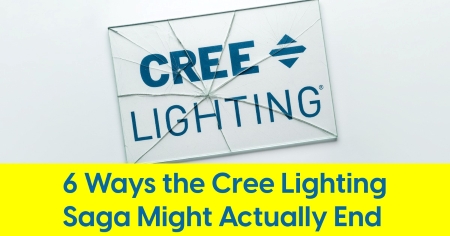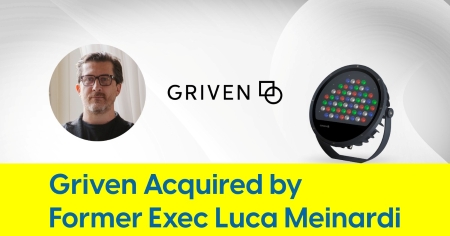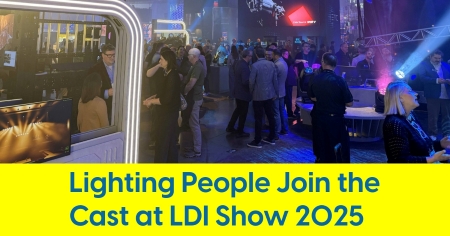June 21, 2025
5 Things to Know: June 21

Confusing reports on Utopia Lighting's comeback from bankruptcy. Plus, does the IBEW Local 3 label still matter in NYC?
Here's a roundup of some of the week's happenings curated to help lighting people stay informed.
1 . Is Utopia Lighting back? More details on its unraveling.
Inside Lighting previously reported on the recent bankruptcy of Utopia Lighting, a California-based manufacturer known formally as Pacific Lighting Manufacturer Inc. Public filings and arbitration records in New York shed more light on certain aspects of the financial breakdown that started months earlier:
- Nov. 15, 2024 – Utopia sells $288,000 in future receivables to Square Funding Cali LLC for $225,000.
- Dec. 9, 2024 – A second deal is struck: $125,000 in receivables sold for $100,000.
- Feb. 6, 2025 – Square Funding alleges Utopia defaulted on both agreements and initiates arbitration.
- Feb. 27, 2025 – The parties settle: Utopia agrees to pay $230,496.37 by March 25.
- Mar. 25, 2025 – Utopia misses the deadline, making only partial payments.
- Apr. 8, 2025 – An arbitrator issues a default award of $305,015.78 in favor of Square Funding.
- Apr. 17, 2025 – Utopia Lighting filed for Chapter 7 bankruptcy protection in the U.S. Bankruptcy Court for the Central District of California.
- Apr. 21, 2025 – Square Funding petitions the New York Supreme Court to confirm the arbitration award.
Meanwhile, recent reports have surfaced suggesting that the Utopia Lighting brand may be reemerging under new ownership or direction. Whether the company’s assets were legally sold or transferred remains unclear, but there are no filings in bankruptcy court that cite a court-approved asset sale.
2. NYC Market Evolution in Focus: IBEW Local 3
We returned to New York City this past week for the Lumen Awards Gala, joining hundreds of glitzy lighting people to toast architectural lighting design against a cinematic Hudson River backdrop.
The sweeping views and top-shelf adult beverages felt a long way from the gala’s earlier days — when the event was held at a no-frills hotel on the corner of 34th and 8th, and Local 3 IBEW manufacturing shops carried real weight in the city’s lighting market. Back then, union-wired fixtures weren’t just a political checkbox; they were a qualifying edge, offering projects fast-turnaround and union made products across the five boroughs.
That era has faded, along with the fluorescent ballasts that once hummed inside union-wired troffers. Twenty years ago, Local 3’s Manufacturing Division was a meaningful part of the local supply chain. Today, just four lighting manufacturers remain among its seventeen active shops:
Local 3–Affiliated Lighting Manufacturers 2025
- Apogee Translite: Commercial lighting for public-transportation projects. Fun fact: Cincinnati-based LSI Industries announced its acquisition in July 2002, then quietly walked it back in September.
- Cooper Lighting (Neo-Ray & AtLite): A familiar name in architectural and emergency lighting, particularly in NYC where AtLite’s exit signs are engineered to meet strict local codes: red “EXIT” lettering in 8-inch height with a 1-inch stroke, metal housings.
- Picasso Lighting: Local 3-made architectural fixtures.
- Sentry Electric: Heavy-duty outdoor fixtures for parks, transit hubs and institutional campuses.
Interestingly, Legion Lighting, a Long Island fixture manufacturer long affiliated with Local 3, still claims on its website that its fixtures are wired by Local 3 electricians, yet the IBEW directory no longer lists the company among its official shops.

Above: Excerpt from Legion Lighting website: ABOUT » CAPABILITIES
Dropped from the IBEW List Since 2017
- Legion Lighting Co., Inc.
- Lite Makers Inc.
- National Lighting
- RAB Lighting
Other Names on the Roster 20 Years Ago
- Linear Lighting
- Lightolier
- Mark Lighting
- Rambusch Lighting
- Zumtobel Staff
Today, Local 3’s union shops still matter in specialized corners — transit infrastructure, switchgear, public projects — where a union label or domestic content can tip the scales. But outside certain niches, the footprint is smaller, the influence quieter.
3. More Details on Valley Lighting Acquisition
Following the May 13 announcement of Caymus Equity’s acquisition of Maryland-based Valley Lighting, new developments confirm broader financial backing for the deal. On June 20, LongWater Capital revealed that the Valley Lighting transaction marked the first investment from its inaugural Small Business Investment Company (SBIC) fund. LongWater, alongside Midwest Mezzanine Funds, provided subordinated debt and minority equity to support Caymus as lead sponsor. Enterprise Bank delivered senior debt financing.
This layered capital structure reinforces confidence in Valley’s project-driven lighting and shading model, especially within the Mid-Atlantic’s government and institutional sectors. The SBIC involvement signals federal backing and long-term growth intent. The June announcement highlights Valley Lighting as a flagship investment for LongWater’s SBIC fund, positioning the company for geographic expansion and enhanced service capabilities.
4. These Vegas Lights Shouldn’t be Flashing
Lighting along Interstate 11 in east Las Vegas, described as “overhead lights” in the news report but actually street lights, were recently repaired after flashing erratically for weeks, according to Kim Passoth of the Fox 5 Las Vegas I-Team. Drivers reported the lights strobing at random, raising safety concerns.
Crews with the Nevada Department of Transportation (NDOT) told Fox 5 they addressed the issue by shutting off two poles, but the exact cause remains a mystery, Passoth reported. A long-term fix is pending transformer installation.
Passoth also noted that this is not the first lighting issue on I-11. In December, copper wire theft disabled lights between Las Vegas Boulevard and Eastern Avenue. NDOT estimated those repairs at $40,000, and similar thefts were previously reported by Fox 5 in 2020.
5. Senate Bill Threatens Energy Efficiency Incentives
The U.S. Green Building Council (USGBC) has urged the Senate to reject a proposed budget reconciliation bill that would eliminate longstanding clean energy and energy efficiency tax incentives. The legislation, introduced by the Senate Finance Committee, would repeal or significantly scale back provisions such as the Section 45L credit for new energy-efficient homes, Section 179D deductions for commercial buildings, and Section 25C for homeowner improvements—each within tight completion timelines.
USGBC Senior Policy Counsel Elizabeth Beardsley warned the cuts would undercut construction and real estate sectors already grappling with tariffs, inflation, and high interest rates. The bill would also rescind funding for federal energy retrofit programs under agencies like the General Services Administration (GSA) and Department of Housing and Urban Development (HUD).
Lighting tie-in:
Lighting systems are directly impacted by the repeal of Section 179D, which recognizes interior lighting as an eligible energy-saving measure. Upgrades like LED retrofits, daylight and occupancy sensors, and optimized lighting layouts could lose significant tax leverage, weakening return on investment. This threatens momentum for energy-efficient lighting projects and may reduce opportunities for lighting designers, contractors, and consultants.
